March 6, 2025 | 03:55 GMT +7
March 6, 2025 | 03:55 GMT +7
Hotline: 0913.378.918
March 6, 2025 | 03:55 GMT +7
Hotline: 0913.378.918
Mr. Bui Khanh Dung, Director of Musa Pacta Co. Ltd., told me that these items have a lifespan of up to 20 - 30 years. The lanterns I see here on the world markets can be sold for USD 200-300 equivalent to VND 5-7 million. Some even cost USD 600-800 equivalent VND 14-20 million.
When he had the opportunity to go to charity to build roads and schools for remote areas, Mr. Dung always ponder about how to make the life of people there less miserable. After all, poverty is asymmetry of income, while people across these areas deem it “equality in expenditure.”
During his stay in Japan from 2015 - 2019, he found that banana silk has the potential to be a way out for the poor in Vietnam. Bananas can be grown everywhere from Lung Cu to Ca Mau, and so there are bananas all year round. Unlike Vietnam, Japan’s bananas can only be grown a little in Okinawa - the hottest place, but sometimes no bunch came out in 3-4 years because it's too cold, so they have no choice but to gather fiber. But they can only get it in 2-3 summer months and import the rest.
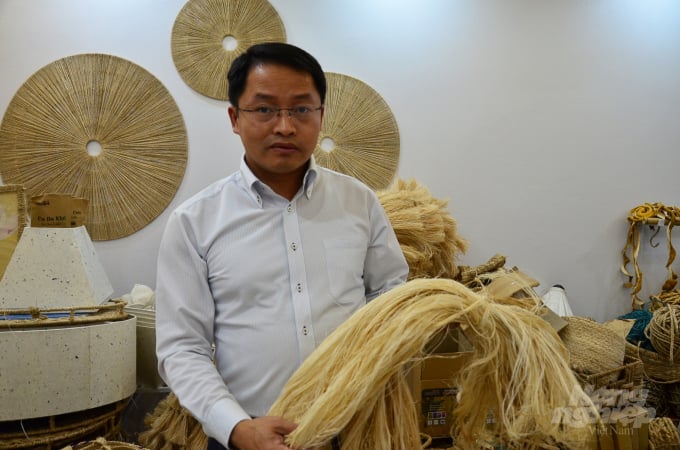
Mr. Dung with the banana fibers. Photo: Duong Dinh Tuong.
Stripping fibers from banana stems. Video: NVCC.
Mr. Dung shared some of his insight regarding this matter:
Our dragon fruit, jackfruit, and banana are flooding the market, This creates the pressure of fresh agro-products being thrown away unharvested, while banana fibers can be kept for years which helps farmers make full use of their leisure time.
The first advantage of banana fiber comes from the material source. Banana fiber is a by-product that is inherently discarded after harvesting the fruit.
If we want to have 1kg of cotton, or jute or ramie, we have to break the soil to plant, take care. Too much waiting means a waste of effort and strength. With banana fiber, although not a square meter of land is lost, hundreds of millions of tons of stems are being thrown away every day, both causing pollution and spreading diseases for banana plants such as Panama or nematodes.
The second is the superiority of banana fiber. This by-product is antibacterial, mildew resistant, tough, durable, hygroscopic. Its fabric is 6 to 10 times cooler than cotton.
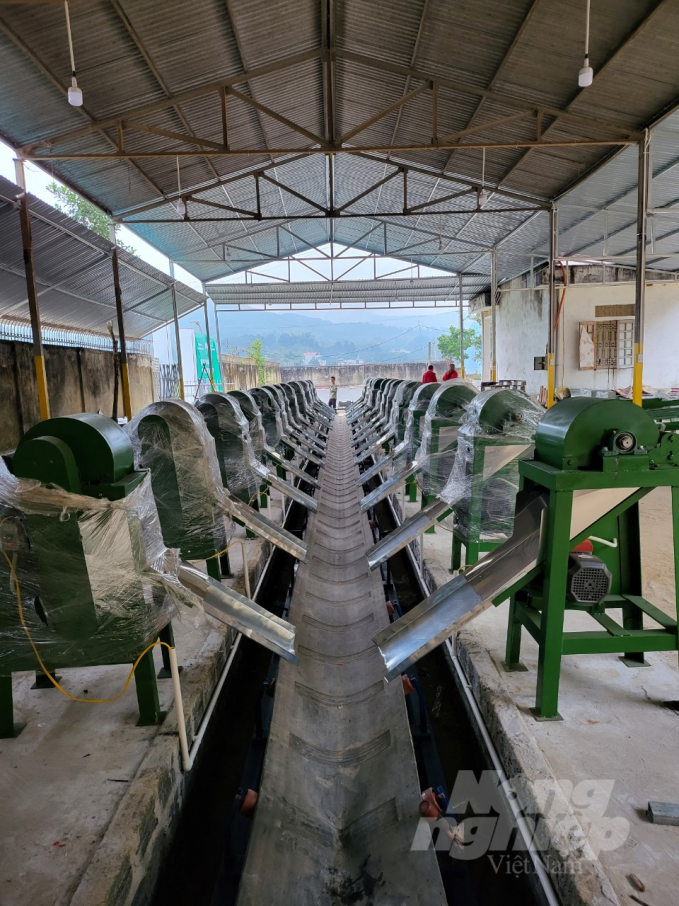
Banana fiber threading machine. Photo: NVCC.
After his return, he conducted some experiments by opening a banana fiber factory at Khai Thai cooperative (Phu Xuyen, Hanoi). He instantly faced the common obstacle: lacking supporting industries.
That's why he had to do most of the steps, even having to invest in GMF Precision Mechanics Company because threading a banana fiber as small as a hair requires equipment with very high accuracy, otherwise it would snap easily or get mixed in the meat sheaths.
Major markets such as the G7, Dubai, and Saudi Arabia all have to import banana fibers to make things, from ship cables to car materials and furniture. High-end fashion brands such as Dior, Yves Saint Laurent, Zara, Uniqlo, and H&M all have products made from banana fiber and fabric.
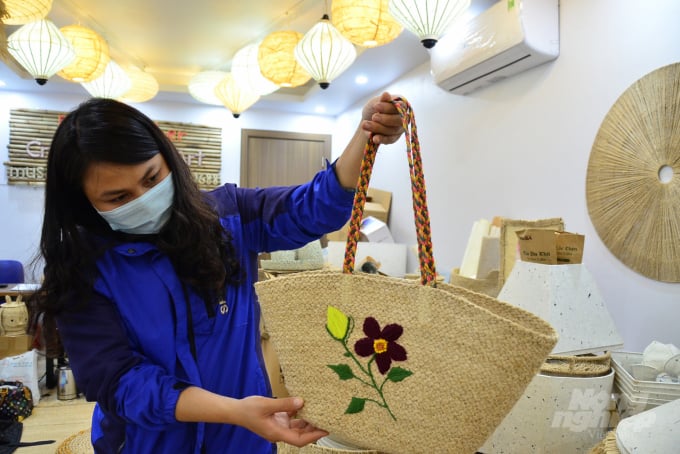
A hand-basket made from banana fiber. Photo: Duong Dinh Tuong.
Musa Pacta Co. Ltd. was established in June 2019. The name is a combination of two Late Latin-base words. “Musa” means “banana” (from Late Latin musa, from Arabic مَوْزَة mawza), and “pacta” means “agreements”. Its existence signifies a pact with one another to be free from poverty, to turn banana fibers into something useful so that the country has one more preeminent commodity in the world market.
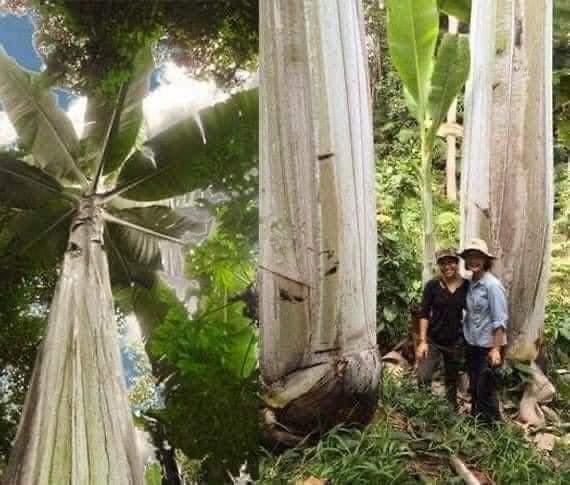
Musa ingens - the giant highland banana. Photo: Documentary.
Musa Pacta takes shape of a banana fiber ecosystem in Vietnam, consisting of five components that intertwine, complement and support each other, including:
1. The system of threading factories which can be developed to villages all over the country to have them commonized. Those who go to the fields or have a few banana stalks in the garden can strip out the fibers and leave them there, then collect them to sell;
2. A system of on-site workshops and handicraft production facilities;
3. High-tech seed research institute and digital transformation will become an incubator, a place to depend on in terms of science and seedlings for farmers and especially banana farmers;
4. The system of banana ecological conservation zones in which there are more than 60 indigenous banana varieties and more than 200 foreign banana varieties.
This is a new product of the tourism industry. It can develop from discovery-tourism, conference-tourism, experience-tourism, and educational-tourism because there are extremely unique banana varieties such as red bananas and black bananas, super-dwarf bananas only 80 cm high but still can grow bunches, super-high bananas up to 20m, bananas that can grow hundreds of bunches with each banana weighing up to 1.5kg;
5. A system of factories producing from cotton fabric, banana fiber to garment, factories processing banana residue into animal feed, growing media or even construction materials.
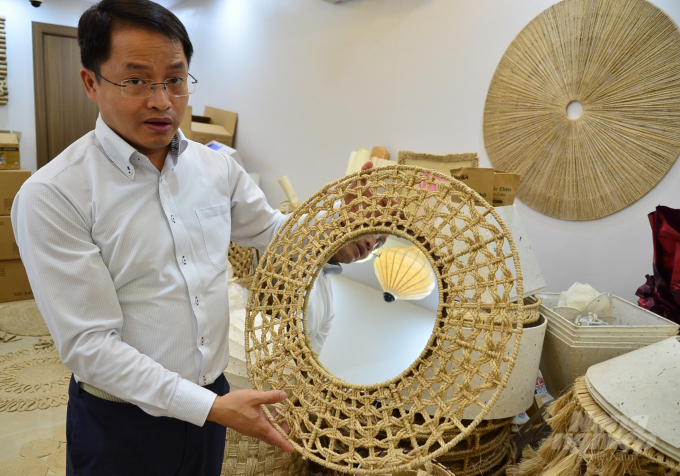
Mr. Dung with products made from banana fibers. Photo: Duong Dinh Tuong.
Tens of billions of Vietnamese dong plus a lot of effort and intelligence have been invested by Mr. Dung and his associates for these ‘petite’ banana fiber threads. Mr. Dung is also the owner of a patent for a device that processes banana stalks into fibers, residues, and water. In other words, there is no waste, instead all are converted into input materials of many other fields.
In the near future, when Musa Pacta’s cotton and fiber factory is inaugurated, one can expect that there will be a line of high quality fabric products for consumption and export.
A new industry, a new ecosystem based on banana fibers will soon take shape.
Translated by Samuel Pham
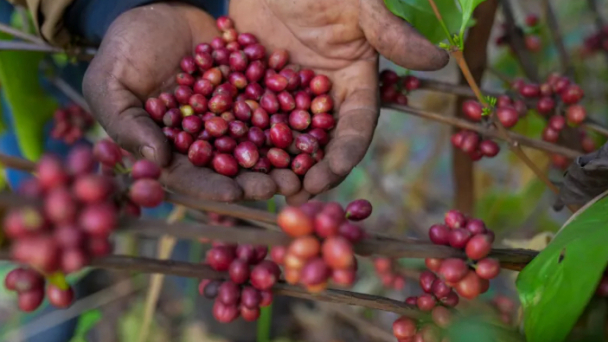
(VAN) Coffee made from excelsa tastes sweet — unlike robusta — with notes of chocolate, dark fruits and hazelnut. It’s more similar to arabica, but generally less bitter and may have less body.
/2025/03/03/4835-3-154232_702.jpg)
(VAN) Currently, farmers in Phu Yen province are focusing on disinfecting and cleaning barns in order to repopulate favorably and ensure disease safety.

(VAN) Khanh Hoa Province's veterinary authorities advise local farmers to fully vaccinate their livestock as a crucial measure to prevent disease outbreaks and promote effective repopulation.
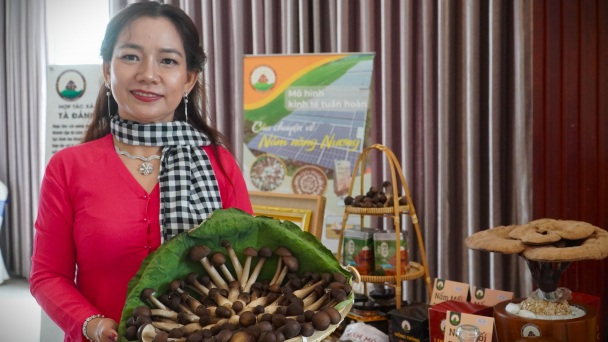
(VAN) Turning waste into resources and integrating solar power, a medicinal mushroom cultivation model run by a woman in An Giang not only reduces costs but also generates a sustainable source of income.
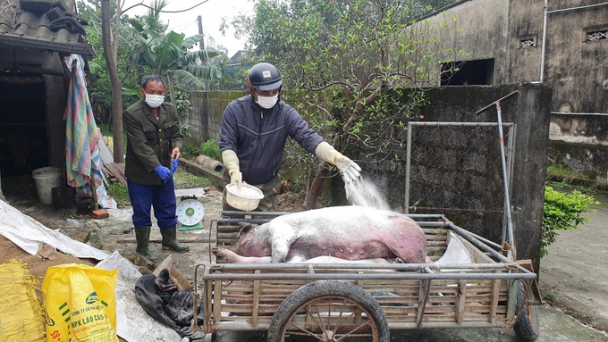
(VAN) The African swine fever has quietly spread in the districts of Cam Xuyen and Thach Ha in Ha Tinh City, posing a high risk of further outbreaks and causing heavy losses for local farmers.
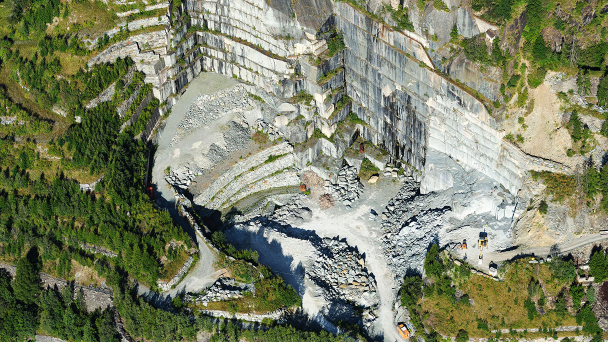
(VAN) New material that could be spread on fields locks up CO2 in minerals.
/2025/02/24/0207-1-194947_615.jpg)
(VAN) Digital transformation and the application of science and technology are considered breakthrough solutions to help realize current goals of developing agricultural production.